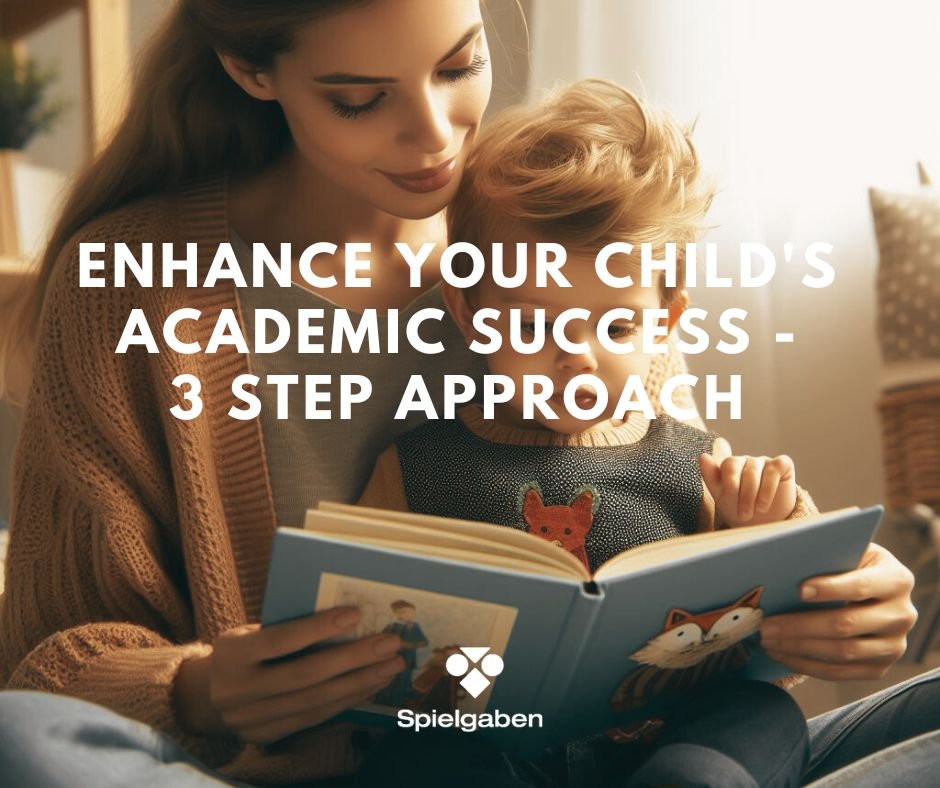How often do you engage in conversation with your child?
According to a comprehensive 6-year study led by social scientists Betty Hart and Todd Risley, a child’s socioeconomic status doesn’t solely determine their academic success.
Instead, it’s the level of communication within their home environment that significantly impacts their later achievements.
Children raised in households with frequent communication, regardless of their parents’ economic background or education level, tend to excel later in life.
On average, children exposed to rich communication environments hear around 2,000 words per hour, whereas those in less communicative settings hear only 300-600 words.
So, how can we enhance communication with our children?
We propose three simple steps: Read, Play, Speak.
In this article, we’ll quickly explore the importance of language proficiency in a child’s educational journey and outline these three steps for fostering effective communication and educational success.
Language proficiency in the early years plays a pivotal role in educational success.
Language goes beyond mere speech and vocabulary; it forms the foundation of learning itself.
A weak grasp of language among kindergarteners can hinder their academic progress in the long run.
Children who struggle to understand language at this stage often lag behind their peers, as their difficulty in deciphering sounds impedes their ability to comprehend information effectively.
Consequently, their educational challenges are exacerbated, highlighting the critical importance of language in the learning process.
Educational achievement hinges less on socioeconomic background and more on parental communication with children.
Educational achievement hinges less on socioeconomic background and more on parental communication with children.
While language development is fundamental to learning, the extent to which a child is exposed to a supportive language-learning environment in early childhood isn’t solely determined by family wealth.
Remarkably, a child’s socioeconomic status doesn’t significantly impact academic success, as indicated by a rigorous six-year study by social scientists Betty Hart and Todd Risley.
Analyzing footage of families from diverse socioeconomic backgrounds, the researchers noted a stark contrast in language exposure. Children from affluent families heard an average of 2,000 words per hour, while those from less privileged backgrounds heard only around 300~600 words. This disparity underscores the critical role of early language exposure in shaping a child’s learning trajectory. Despite socioeconomic differences, children from homes with extensive verbal interaction achieve better academic outcomes later in life.
However, it’s not just the quantity of words spoken that matters; quality is equally important. The study revealed that exposure to a diverse vocabulary enhances learning. Therefore, the richness of language use correlates with the frequency of communication. As parents engage in more conversations, their children’s language skills become more varied and robust, facilitating comprehensive learning and cognitive development.
Encourage your child’s learning and language development through three simple steps: Read, Play, Speak.
So, what can you do to aid your child’s language development and increase parent-child communication?
Here are 3 steps to follow: Read, Play, Speak:
First: Read
Read to your kid and tell him or her stories. In fact, story time is one of the best chances to communicate with your child and expand his or her vocabulary.
We all know that reading and storytelling give kids opportunities to learn, and with a little extra effort you can take that opportunity much further. First, by paying attention to changes in your child’s interest or enthusiasm, you can shift focus to the things that jump out to him.
Talking more isn’t just about reading more books. To get the most out of story time, you should talk to your kid about what’s going on in the book and how it affects the characters. Giving such explanations will build meaning in your child’s mind.
As your child grows older, you can take turns. At this point, instead of explaining to your child what happened, you can encourage him to share his own ideas about the story and engage in discussion about them.
Second: Play.
Pay attention to where your child’s attention is will enhance their learning development and it is a great idea to join his play or activity whenever your child plays. Say your kid is sitting on the floor playing with building blocks. You might help them with the tower they’re building and talk to them about its colors, height and what will happen if it gets too tall. Playing and talking with your kids about what they’re focusing on will make for a great learning experience and no need to force them since they’re more actively involved.
Third: Speak
It is all about engaging your child in conversation by responding to each other’s gestures, sounds and words; this technique is designed to encourage your child to speak.
Give your child the extra few seconds he needs to think of a word, instead of saying it for him. While this will initially mean he hears less language, it will lead to conversation, providing more opportunities for language learning in the future.
Another strategy is to ask your child open-ended questions that begin with “how?” or “why?” These questions work well because it’s hard to answer them with gestures, thereby prompting your child to speak.
Conclusion
Every child holds the potential for both social and academic success. However, nurturing this potential requires support from caregivers starting at a young age. It’s crucial to establish positive environments conducive to early language learning and raise awareness about this fundamental aspect of parenting.





